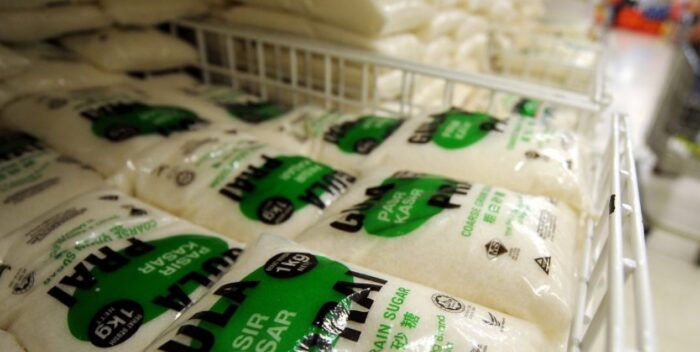MALAYSIANS have become accustomed to subsidised products and services. It is a challenge to remove the subsidy and have it replaced by a new rationalised subsidy or a non-subsidised price culture where domestic prices of goods and services would align with international prices.
Like many countries around the world, Malaysia has been imposing price controls/ceilings and subsidies to serve social and economic objectives.
They are intended to protect vulnerable consumers/households against the impact of price increases; help to stabilise prices and to ensure adequate supply of essentials as part of a price-support programme to maintain the incomes of producers during the harvesting shock or the supply-demand disruptions.
While the well-intended price subsidies and controls offer some relief and protect consumers against price, income and supply shocks, untargeted price subsidies come with high economic and fiscal costs in the long-term.
Price controls and subsidies can dampen productive investment and growth, discourage greater work efforts and cause the government to incur heavy fiscal burdens.
Among others, it reduces the fiscal capacity as the huge financial resources spent on subsidies have diverted the budget’s allocation from other sectors such as education, healthcare, infrastructure, housing and that for elderly care.
Challenges to initiate reform
When initiating the price-subsidy reform, there are two forms of resistance. First, the resistance comes within the government and politicians stemming from fear of facing political backlashes from their voters for introducing unpopular measures.

Secondly, there is societal resistance as the public is concerned about the dampening impact – both implicit and explicit – from subsidy removal on their income and living standard.
Henceforth, the government needs to keep regular engagement at all levels by communicating with the public and community of the economic and opportunity costs of not undertaking price reforms.
Where there is a lack of public confidence in the governance of fuel subsidy savings to implement programmes that compensate the lower-and middle-income households, the society will likely find targeted spending to be less credible and will resist subsidy reform.
The timing and pace of reform depends on political and economic environment. Rapid reform requires a stable political and conducive economic environment.
If the political and economic conditions are challenging – especially inflation pressures and cost of living still persistent – the government can undertake a sequential and gradual reform approach with careful communication to ensure political and social acceptance.

In this regard, replacing price control and the rationalisation of subsidies with expanded and better-targeted social safety nets must be implemented gradually to smoothen the impact on the economy; this will allow households, producers and businesses to adjust and cope with the cost impact arising from removal of price controls and subsidies rationalisation.
There is a trade-off between rapidly slashing subsidies and mitigating the impact on the vulnerable households. While the elimination of subsidies will result in immediate budget savings and correct the distortion of resources, it can also result in lowering real income of the low-income households.
Few ways of implementation
The social impact of price-subsidy reform can be limited by establishing cost-effective and well-targeted social protection mechanisms so as to mitigate the effects of reforming implicit and explicit price subsidy reform.
The mechanism comes in the form of providing cash compensation to the targeted users in lieu of the subsidy cut. This can be merged with existing cash transfer scheme (eg by increasing the amount of cash assistance).
Coupons can be allocated to allow targeted households to consume a certain “lifeline” amount of subsidised food or fuel products. Social safety nets are more cost effective and have a much more profound impact than generalised price subsidies.
In deciding how to target compensation and price subsidies, the government needs to adopt a more holistic approach and have the ability to determine and identify the targeted group as well as the administrative cost.
The design of targeting mechanism must meet the goals of efficiency and equity in ensuring the needy and deserving group will receive adequate protection and income support when implementing the price-subsidy reform.

Target benefits to population groups will be on the basis of socioeconomic and demographic characteristics. Categorical targeting goes by the level of income and cost of living, while geographical targeting is for those residing in specific areas within a country.
Shifting from universal-access subsidy programme to targeted programme requires a comprehensive and transparent mechanism with clear objectives to identify poor households and to deliver benefits.
The Government can consider linking the subsidy or cash benefit to a self-targeting work requirement. The form of assistance can be made in-kind or monetary through food-for-work programmes; attending short-term training; and the requirement for self-improvement.
The implementation of difficult subsidy reform needs a strong political courage. Transparency and stakeholder dialogues are the cornerstone of subsidy reform in determining its design, passage and implementation.
Transparent and extensive communication to explain why we have to shift from products subsidy to targeted households will benefit the vulnerable households more; how the resources saved from a universal subsidy programme will be re-deployed for other priority spending such as investment in infrastructure, to fund pensions for an ageing population, provide better healthcare, provide a better education for future generations or help combat climate change.
In addition, regularly publish information on the size of targeted social assistance programme and how they affect the government’s budget will also be helpful. – May 3, 2023










